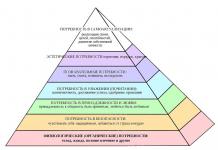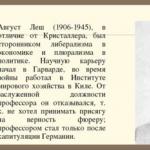Instructions
Remember that complex offer may include two or more subordinate clauses, which are connected by coordinating conjunctions. Moreover, the sentences are not complex in relation to each other, since they both obey the main thing. They are classified as homogeneous subordinate clauses. Punctuation marks between them are placed according to the rules relating to homogeneous ones.
Video on the topic
Please note
There are also non-union complex sentences in which simple sentences communicate with each other only by intonation, without the help of conjunctions and allied words.
In our language, thoughts can be conveyed using different designs proposals. Conjunctive and non-conjunctive complex sentences are capable of replacing each other in speech: when the structure changes, the semantic content remains the same. Omit the conjunction - and in front of you non-union proposal. Do not distort the meaning and use punctuation marks correctly!

Syntactic analysis of a simple sentence has become firmly established in the practice of elementary and high school. This is the most difficult and volumetric view grammatical analysis. It includes the characteristics and outline of the sentence, analysis by members indicating parts of speech.
The structure and meaning of a simple sentence is studied starting from the 5th grade. The full set of features of a simple sentence is indicated in the 8th grade, and in the 9th grade the focus is on complex sentences.
In this type of analysis, the levels of morphology and syntax are correlated: the student must be able to identify parts of speech, recognize their forms, find conjunctions, understand how words are connected in a phrase, know the signs of the main and minor members of a sentence.
Let's start with the simplest thing: help the guys prepare to perform parsing in 5th grade. In elementary school, the student remembers the sequence of parsing and performs it at an elementary level, indicating the grammatical basis, syntactic connections between words, the type of sentence according to the composition and purpose of the statement, learns to draw up diagrams and find homogeneous members.
In elementary schools, different Russian language programs are used, so the level of requirements and student preparation are different. In the fifth grade, I took in children who studied in elementary school under the programs of the educational system "School 2100", "School of Russia" and "Primary School of the 21st Century". There are big differences. Teachers primary school They do a tremendous amount of work to compensate for the shortcomings of their textbooks, and they themselves “create” continuity between primary and secondary schools.
In grade 5, the material on sentence analysis is generalized, expanded and built into a more complete form; in grades 6-7 it is improved taking into account newly studied morphological units (verb forms: participle and gerund; adverb and state category; function words: prepositions, conjunctions and particles ).

Let us show with examples the differences between the level of requirements in the parsing format.
|
In 4th grade |
In 5th grade |
|
In a simple sentence, the grammatical basis is highlighted, familiar parts of speech are indicated above the words, homogeneous members are emphasized, phrases are written out, or syntactic connections between words are drawn. Scheme: [O -, O]. Declarative, non-exclamatory, simple, common, with homogeneous predicates. Noun (main word) + adj., Ch. (main word) + noun. Ch. (main word) + place. Adverb + verb (main word) |
Syntactic connections are not drawn, phrases are not written out, the scheme and basic notations are the same, but the characteristics are different: narrative, non-exclamatory, simple, two-part, common, complicated by homogeneous predicates. Analysis is constantly practiced in lessons and participates in grammatical tasks in control dictations. |
|
IN complex sentence grammatical basics are emphasized, parts are numbered, familiar parts of speech are signed above the words, the type according to the purpose of the statement is indicated, and emotional coloring, by composition and presence of secondary members. Parsing scheme: [O and O] 1, 2, and 3. Narrative, non-exclamatory, complex, widespread. |
The scheme remains the same, but the characteristics are different: narrative, non-exclamatory, complex, consists of 3 parts that are connected by a non-union and union connection, 1 part has homogeneous members, all parts are two-part and widespread. Analysis of a complex sentence in grade 5 is for educational purposes and is not a means of control. |
|
Sentence patterns with direct speech: A: “P!” or "P," - a. The concept of quotation is introduced, which coincides in design with direct speech. |
The diagrams are supplemented by a break in direct speech with the words of the author: “P, - a. - P.” and "P, - a, - p". The concept of dialogue and ways of its design are introduced. Schemes are drawn up, but sentences with direct speech are not characterized. |
Plan for parsing a simple sentence
1. Determine the type of sentence according to the purpose of the statement (narrative, interrogative, incentive).
2. Find out the type of sentence by emotional coloring (non-exclamatory or exclamatory).
3. Find the grammatical basis of the sentence, underline it and indicate the methods of expression, indicate that the sentence is simple.
4. Determine the composition of the main members of the proposal (two-part or one-part).
5. Determine the presence of minor members (common or non-common).
6. Emphasize minor members sentences, indicate the ways of their expression (parts of speech): from the composition of the subject and the composition of the predicate.
7. Determine the presence of missing members of the sentence (complete or incomplete).
8. Determine the presence of a complication (complicated or not complicated).
9. Write down the characteristics of the proposal.
10. Create an outline of the proposal.
For analysis, we used sentences from Sergei Kozlov’s wonderful fairy tales about the Hedgehog and the Little Bear.
1) It was an extraordinary autumn day!
2) Everyone’s duty is to work.
3) Thirty mosquitoes ran out into the clearing and began to play their squeaky violins.
4) He has neither a father, nor a mother, nor a Hedgehog, nor a Bear.
5) And Belka took some nuts and a cup and hurried after.
6) And they put things in a basket: mushrooms, honey, a teapot, cups - and went to the river.
7) And pine needles, and fir cones, and even the cobwebs - everyone straightened up, smiled and sang with all their might the last autumn song of the grass.
8) The Hedgehog lay, covered up to his nose with a blanket, and looked at the Little Bear with quiet eyes.
9) The hedgehog sat on a hill under a pine tree and looked at the moonlit valley, flooded with fog.
10) Across the river, the forest was dark, blazing with aspens.
11) So until the evening they ran, jumped, jumped off the cliff and screamed at the top of their lungs, setting off the stillness and silence of the autumn forest.
12) And he jumped like a real kangaroo.
13) Water, where are you running?
14) Maybe he's gone crazy?
15) It seems to me that he imagined himself... as the wind.
Examples of parsing simple sentences




Scheme of a simple complex sentence- This is a linear diagram. It reflects the features of the location, connection, etc. of each specific complication. Complications can include homogeneous members, addresses, introductory and insertion elements, participial and adverbial phrases, constructions with the meaning of clarification, explanation, etc. Let us consider the most traditional cases of complicated simple sentences and comment on the construction of their schemes.
1. Homogeneous members.
NB! Homogeneous members (OM) are graphically indicated by circles in which the syntactic function of the OM is marked. Between points in the scheme, punctuation marks and conjunctions are preserved. The OC diagram itself is enclosed in square brackets indicating a simple sentence.
Quiet, beautiful, and fabulously sad birch trees stood above the water.
[And och, and och, and och...].
2. Appeals.
NB! When constructing sentence diagrams with an address (O), it is important to reflect in the diagram the location of the O - at the beginning, middle or end of the sentence, as well as punctuation marks with it. O is not a member of the sentence, so most often it is separated in the diagram by straight vertical lines
| |, leaving the field inside empty, and mark “O”.
Taiga, I have never seen you more beautiful in my life.
3. Introductory words, phrases and sentences (VS).
NB! Similar to addresses, in the BB diagram it is important to indicate the position of the BB in the sentence and their punctuation marks. BBs are not a member of the sentence.
It seems he had a friend Kulikov.[…, | ВВ|, …].
In the Snowballs - as old people often used to say - the most terrible legends came to life.
[… – | BB| –...].
4. Participial phrases.
NB! For participial phrase(PO) in the diagram it is important to show its place in relation to the defined word, designated as X, as well as the corresponding punctuation marks.
The frost, gradually getting stronger in the evening, did not allow the children to finish playing hide and seek.
[X, | ON |, …].
The year that passed without looking back was little remembered by Antonina.
[| Software | X …].
5. Participial phrases.
NB! The participial phrase (DO) requires an indication of its location in the sentence in the diagram - it is not tied to one word, as is the case with PO, as well as its punctuation marks.
Arriving at the lake, Serge lowered his gun. [| DO |, ch. ...].
Serge lowered his gun as he approached the lake. [Ch., | DO |].
Serge, driving up to the lake, lowered his gun.[…, | DO |, ch...].
6. Constructions with the meaning of clarification, explanation, accession etc.
NB! Such constructions add additional meaning to the sentence. For their diagram, it is important to indicate the location in the sentence and punctuation marks.
It was very cold, especially at night.[...nar, | joining |].
In this article we looked at the most common cases; In addition to the already discussed options, you can find proposals with plug-in structures, etc. You can also come across combined proposals. Let's consider one of them.
Contrary to weather forecasters, the sun was warm and promised people a great weekend, giving them a boost of energy for the whole week.
[|BB|, ... OC and OC... noun, | software |].
website, when copying material in full or in part, a link to the original source is required.
The ability to draw up a sentence outline is necessary for schoolchildren and students of philological faculties. Often, when performing syntactic analysis, problems arise with drawing up a sentence diagram. Moreover, precisely thanks to the clear and clear diagram you can see the parts of a complex sentence, trace the logic of composition and subordination, and visually record the main members. It is especially convenient to use diagrams when analyzing sentences with a complex structure, with different types connections. Schools and universities also conduct classes in which they not only draw up diagrams of ready-made sentences, but also compose texts according to given schemes. It is important to master the basic techniques in order to create a proposal outline correctly. Then it will help you visualize the syntactic structure of the text.
We draw up a proposal outline. General recommendationsFirst, you will need to remember all the basic information from the “syntax” section.
- You need to know exactly how a simple sentence differs from a complex one, and be able to find parts in a complex sentence.
- Requires knowledge of the types of simple and complex sentences.
- The skill of determining the boundaries of a sentence and its grammatical basis is of great importance.
- To accurately highlight the grammatical basis, you need to know the types of predicates and the main ways of expressing them.
- It is necessary to repeat all the complicating elements of the sentence in order to quickly find and distinguish from each other isolated, homogeneous members of the sentence, appeals, introductory and clarifying constructions.
- You must be able to determine the type of sentence by the structure of its grammatical basis.
- It is advisable to freely navigate the means of communication of sentences, to distinguish conjunctions from allied words. It’s great if you can immediately determine the type of connection or the type of subordinate clause based on the conjunction.
- IN at the moment special attention is paid to the analysis of sentences of a complex structure with different types of connections, so you will need the skill of analyzing such sentences, the ability to determine parallel, sequential, homogeneous subordination.
Algorithm for creating a proposal diagram
The proposal scheme must be drawn up according to a specific algorithm. Try to concentrate and not be distracted, take notes on a piece of paper, write a draft. Only after a complete analysis of the proposal, when you check whether your diagram is drawn up correctly, can you transfer it to the final version.
- Read the sentence carefully 2-3 times. Think about the meaning of each word - this will help you not to confuse the role of words in a sentence in the future.
- First, define the grammatical basics. Select the subject and predicate. The predicate is emphasized by two lines, and the subject by one.
- Think about whether the sentence in front of you is simple or complex. Sometimes there is only one subject, two predicates, and the sentence is complex. Don't forget that there are one-part and incomplete sentences.
- Mark the boundaries of sentences with vertical lines.
- Identify all the minor members of the sentence, underline them, following general conventions:
- definition – wavy line;
- addition – dotted line;
- circumstance – dot, dash, dot, dash;
- participial phrase - dot, dash, dot, dash, highlighted on both sides by vertical lines;
- the participial phrase is a wavy line, distinguished by vertical lines on both sides.
- definition – wavy line;
- Highlight the predicative parts in a complex sentence. To do this, you will need to determine the type of connection in the sentences; the designation will depend on it:
- equal parts of a compound sentence are enclosed in square brackets;
- V complex sentence main part is indicated by square brackets, and the subordinate clause by round brackets.
- equal parts of a compound sentence are enclosed in square brackets;
- Pay attention to the conjunctions: in compound sentence the conjunction must be left outside the boundaries separating simple sentences from each other. In a complex sentence, the conjunction is included in subordinate clause. Sometimes conjunctions are double, one part of them remains in the main clause.
- Find a word in the main sentence from which you can ask a question to the subordinate clause. Sometimes the question is asked from the entire sentence as a whole. Thus, there is a difference between a word connection and a sentence connection. If the connection is conditional, put a large dot above the main clause and draw an arrow from it to the subordinate clause. Above the arrow, write down the question that answers. subordinate clause. When the connection is propositional, the arrow is drawn without a dot.
- Now you can start transferring the schema. There is no need to rewrite the sentence itself into it. IN classic scheme indicate only grammatical basics, sentence boundaries, complicating elements, connection of sentences, indicate an arrow with a question to which the subordinate clause answers, enter conjunctions and allied words. However, do not forget about the specific requirements of the teacher. Sometimes for practical exercises it is necessary to indicate all the members of a sentence in a diagram.
- If you have a proposal with a complex structure in front of you, your diagram will not be built in one line, but three-dimensional. Determine the type of subordination, build a scheme depending on it.
- Sequential subordination: First, mark the main clause, draw an arrow down from it, and on the next line graphically mark the subordinate clause by drawing parentheses. From the subordinate clause, draw the arrow down to the next subordinate clause, then follow the sequence.
- Homogeneous subordination - subordinate clauses depend on the main clause and answer one question. Indicate the main sentence and draw arrows down from it. On the second line, place the designations of all subordinate clauses. Write one general question.
- Parallel subordination - subordinate clauses answer different questions and depend on the main one. Indicate the main sentence with square brackets, draw arrows from it to the subordinate clauses, and next to each arrow write the question that the subordinate clause answers.
- With combined subordination, different types of communication are combined. The scheme will also be combined: place sequentially subordinate sentences on top of each other, and place parallel or homogeneously related sentences on the same line.
- Sequential subordination: First, mark the main clause, draw an arrow down from it, and on the next line graphically mark the subordinate clause by drawing parentheses. From the subordinate clause, draw the arrow down to the next subordinate clause, then follow the sequence.
- Mark the levels of division with numbers. For example, when the subordination is sequential, the first subordinate clause is on the first level, and the second is on the second. One level is one line, but the main sentence is not taken into account in the numerical designation: these are precisely the levels of division, and not the number of sentences.
- Right find homogeneous terms in the sentence and make the appropriate notes (underlining: subject - one line, predicate - two lines, object - dotted line, circumstance - dotted line - dot, definition - wavy line.
- Compose scheme taking into account the syntactic parsing of the sentence.
- In the diagram, we are homogeneous members of the sentence denote circle, inside which there is a corresponding underlining.
- homogeneous members - circles ;
- the subject is indicated as a straight line;
- predicate - two parallel lines;
- addition - dotted line;
- definition - wave (wavy line);
- a circumstance is indicated by a line that consists of dots and dashes;
- and others.
In sentence diagrams, homogeneous members are indicated by a circle. Inside the circle using graphic designation you can indicate which members of the sentence are homogeneous words.
Also often in diagrams you can find indications of conjunctions that come before homogeneous members of the sentence and determine this or that punctuation.



I remember that at school different teachers required us to draw such diagrams in different ways. Some asked to draw a linear diagram, and enclose homogeneous members in sticks, frames: / /, / /, / /.
Others insistently demanded drawing circles.
Here are some examples of diagramming:

This simple circuit, when homogeneous members follow each other, unions can occur between them.

This is an example of sentences with generalizing words. Note that a generalizing word can agree with homogeneous members in gender, number, and case.
If a sentence contains a participial and adverbial phrase, it is also reflected in the diagram.
With homogeneous members of a sentence, the sentence scheme can have several options.
At the beginning of the sentence there are homogeneous members of the sentence, then there is a generalizing word. The diagram will look like this: 1) O, O, O-- generalized. word....(The generic word is indicated by a circle with a dot inside, but I can’t display it).
In the field, in the grove, in the bushes - bird voices were heard everywhere.
2) The generalizing word can be before the listing of homogeneous members, then we draw the following diagram:
Descriptive word: O, O, O-- ....
We argued about everything: art, religion, science - and never came to a common opinion.
3) After a generalizing word, introductory words can be used: somehow, namely, for example. A comma is placed before these words, and a colon after them.
Generalization word, for example: O, O, O--...
General word, namely: O, O, O -- ...
People have experienced many natural disasters, such as fires, floods, drought.
4) After listing the homogeneous members of the sentence, introductory words can be used before the generalizing word: in a word, in one word, in short, etc. Then a dash is placed before introductory words, and after it - a comma.
Among the birds, insects, in the dry grass - in a word, the breath of approaching autumn was felt everywhere.
When drawing up a sentence diagram, all its members are written using symbols. Instead of the subject, a straight line is drawn, and instead of the predicate, two parallel lines are drawn. The wavy line symbolizes the definition, and the dotted line symbolizes the addition. With the help of dots and dashes, a circumstance is depicted, and if these dots and dashes are enclosed in vertical lines, then this is already an adverbial phrase. The wavy line between the vertical lines is a participial phrase.
Homogeneous members of the sentence in the diagram are drawn in the form of circles.

To indicate the syntactic role of homogeneous members, corresponding lines can be drawn inside the circles: dotted or wavy, etc. Generalizing words can be denoted by a circle with a dot in the center or a square.
To compose diagram sentences with homogeneous sentence members, you need to do the following:
For example, in the sentence: Red, yellow, blue flowers grew in the clearing; homogeneous definitions will be all adjectives (underlined with a wavy line). And in a sentence: In the yard there stood a mighty and spreading tree and dropped its leaves to the ground, two rows of homogeneous members: homogeneous predicates (it stood and dropped leaves - two features) and homogeneous definitions(powerful and spreading - wavy line).
For example, a sentence diagram with rows of homogeneous members: The most important thing is to read, delve into what is written long and painstakingly

Homogeneous members of a sentence are understood to be those members of a sentence that have the following characteristics:
firstly, we are talking about identical members of the sentence. For example, these can be circumstances, additions or subjects, that is, any.
secondly, they are interconnected by a creative connection. These can be conjunctions and, but, or.
Here is an example of sentences with homogeneous members:

In the first sentence, the definitions are homogeneous (green, yellow, red).
In the second sentence, the subjects are homogeneous (swifts, cranes, swallows),
and in the third - predicates (withered, dried up, darkened).
Schematically, homogeneous members are indicated by circles.
Here are the possible schemes:

When drawing up a sentence diagram, its members are designated by different conventional signs which we will look at below:
Using the diagram below, it is very easy to compose a sentence containing homogeneous members, and vice versa, from a ready-made sentence to compose correct scheme. In addition to symbols, do not forget about dividing marks, conjunctions, and intonation.

Homogeneous members of a sentence are indicated when drawing up a diagram in the form of circles. It all depends on the offer. There may be commas or conjunctions between these circles. They also need to be specified.
In some schools (including ours), when drawing a diagram of a sentence with homogeneous members inside circles, they indicate with the help of line-dot images which members of the sentence they are:

There are sentences with generalizing words. In this case, the generalizing word is drawn in the form of a large circle or in the form of a square:

When composing a sentence with homogeneous members, it is important to remember that:
Homogeneous members of a sentence are associated with the same word
Homogeneous members of a sentence answer the same question
When drawing up diagrams, each part of a sentence is indicated by certain figures, corresponding punctuation marks, and they contain a connecting particle (and, or, but, a).



















